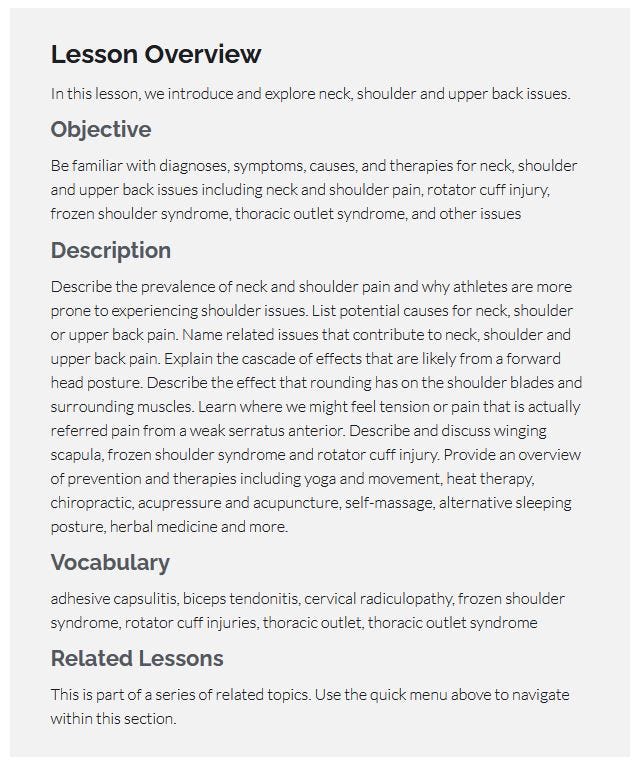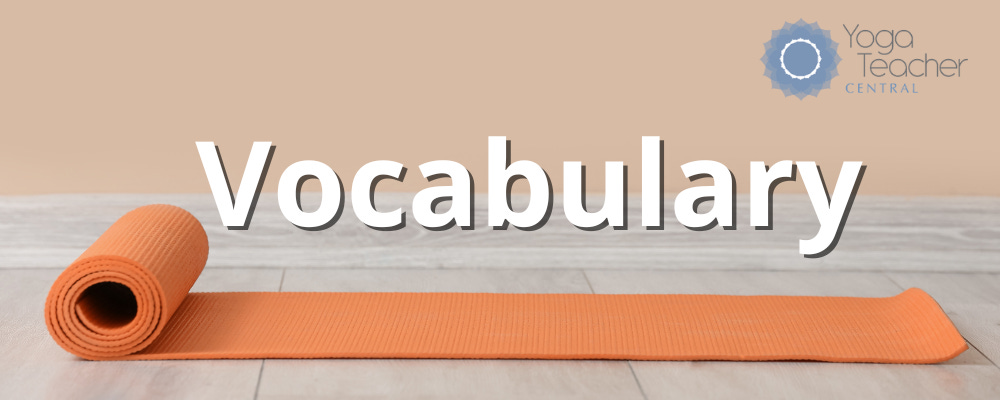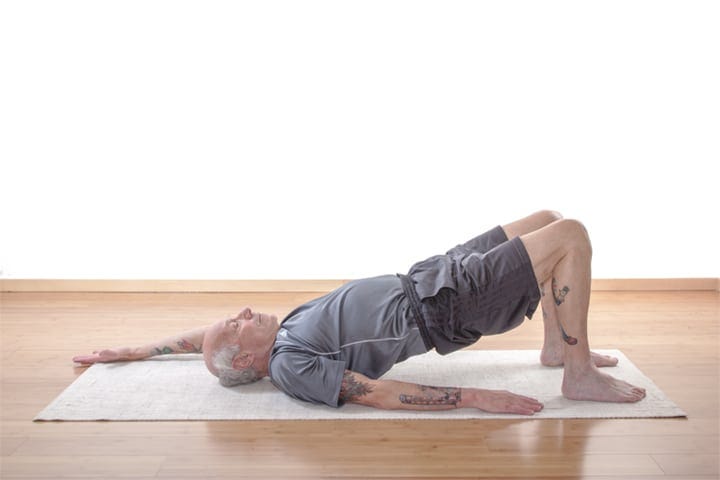Understanding and addressing neck and shoulder pain: postural issues, joint misalignment, nerve pain, rotator cuff injury, frozen shoulder, thoracic outlet syndrome, and other diagnoses
In our expanded lesson series on neck and shoulder pain, we draw from more than 60 sources, empowering you with a comprehensive perspective + nitty-gritty details for choosing teachings & therapies.
The neck is burdened with the challenging task of supporting and moving the human head. Because of the tension, trauma and poor postural habits inherent in today’s workplace, it is no surprise that head-on-neck and neck-on-thorax [chest region] disorders rank high among the most common pain generators driving people into bodywork and movement practices.
Contents
Neck & Shoulder Issues Lesson Overview & Vocab
Neck & Shoulder Issues: Potential Causes
Common Postural Issues
Frozen Shoulder Syndrome
Prevention & Therapies Overview
Neck & Shoulder Pain Lesson Series
We’re Happy to Be Your Research Assistant
Recent Newsletters
Neck & Shoulder Issues Lesson Overview & Vocab
I’m excited to let you know that we’ve expanded the powerful lesson series dedicated to understanding and responding to issues related to the neck, shoulders and upper back. This post features excerpts from the first lesson, Neck & Shoulder Issues.
ADHESIVE CAPSULITIS — Another name for frozen shoulder syndrome
BICEPS TENDONITIS — “Inflammation or irritation of the upper portion of the biceps tendon… common symptoms include pain in the front of the shoulder and weakness with movement of the shoulder” [OrthoInfo]
CERVICAL RADICULOPATHY — Compression of nerves in the neck, causing pain
FROZEN SHOULDER SYNDROME — In this condition, the shoulder joint is restricted, likely due to inflammation and/or scar tissue and a lack of synovial fluid, causing varying degrees of stiffness and pain when moving the arm in most directions and with passive movement
ROTATOR CUFF INJURIES — Injuries to the muscles of the rotator cuff, including mild tendon inflammation (tendonitis), shoulder bursitis, calcific tendonitis, and partial or full tears
THORACIC OUTLET — A space on either side of the neck that contains nerves “and a blood supply that feeds the arm all the way down to the fingers.” [dictionary and David Keil]
THORACIC OUTLET SYNDROME — “An umbrella term that describes three related syndromes caused by nerve compression in the upper body, specifically the nerves in the neck, chest, shoulders and arms.” [Jillian Levy]
Neck & Shoulder Issues: Potential Causes
Many muscles can potentially be involved in shoulder and upper back issues. For instance, pain felt in the upper back may be caused by the shoulder blades being pulled away from spine which in turn may be caused by chronic tightness in chest muscles. See more: Anatomy of the Shoulders.
In this article, Olga Kabel categorizes “three main reasons why we get neck tension: overuse, underuse, and abuse.”
Causes of neck, shoulder and upper back pain or tension may include:
Joint misalignment — “I have observed in clinical settings that many instances of stiff neck are a result of joint misalignment in the cranial and cervical regions.” [Kuo-Pin Wu] “He performed some manipulations on my neck… and within seconds, my radiculopathy was gone… My pain disappeared, my neck movement improved, and I walked out feeling like a different person.” [Doc Malik]
Postural issues, muscular imbalance — “Poor posture throws your nervous system into stress mode, disrupting heart rate variability and reducing your ability to recover from daily stress.” [Dr. Joseph Mercola] Muscular imbalance may occur due to poor habits or repetitive movement patterns. For instance, forward head or other postural imbalances may arise from daily habits such as typing on a computer or carrying children, or repetitive practicing of improperly aligned asana. Other musculoskeletal imbalances include one shoulder higher than the other or rotated forward, one scapula pulled in more than the other, the head leaning to one side, and/or a flattened cervical curve. [Gary Kraftsow, Yoga for Wellness, p. 143]
Rotator cuff injury — Accidents and repetitive actions are often the cause of rotator cuff injury. The most common rotator cuff injury is to the supraspinatus which, Doug Keller notes here, can happen from overdoing poses that bear weight on the shoulders such as Adho Mukha Svanasana (Down Dog), Vasisthasana (Side Plank), and arm balances such as Tittibhasana (Firefly).
Excess sitting — “Sitting for more than four hours a day increases your risk of neck pain by 60%, and that risk jumps to 88% after six hours… Using a cellphone puts significantly more strain on your neck than watching TV or using a computer due to forward head posture.” [Dr. Joseph Mercola]
Excess screen time — “If you read a lot on your screen, the action of your eyes is very repetitive from left to right… your eyes follow the same path over and over, which creates eye strain.” [Olga Kabel] “There is a difference in visual demand when one is viewing the display on the computer screen compared to reading a printed text. An image which is produced on the screen is made up of thousands of tiny spots… which collectively form the image. The margin of the image or a word is usually not sharp, and this is worsened if the image or word is formed by minimal pixels, or what is known as low resolution. As the resolution goes down… the visual demand of a reader has to be increased in order to appreciate the wording or image… The contrast (intensity of the light) of the word to the background, the glare of the computer screen, and the reflection from the glass screen are all important factors determining the amount of visual demand one must put in order to perceive the image well.” [Malaysian Family Physician]
Wearing backpack incorrectly — “Students, office workers (especially those carrying laptops), and people who enjoy hiking, climbing, or cycling should pay close attention to how they wear their backpacks. Improper backpack use can not only cause neck pain but also lead to shoulder and neck muscle stiffness, rounded shoulders, and even spinal disc herniation in severe cases. Therefore, it is crucial to follow these three tips when wearing a backpack.” [Naiwen Hu]
Chronic inflammation — Includes inflammatory conditions such as arthritis. Frozen shoulder syndrome is more common “among people with systemic diseases such as diabetes.” [Beth Spindler] This fact supports the possibility that chronic inflammation is behind some cases of shoulder restriction because inflammation also underlies most chronic conditions.
Sleeping materials or sleeping position — Waking up with neck pain could indicate the mattress, pillow, or sleeping position is causing pain. “Mattresses that are too soft keep the muscles in your back tense for an extended duration, causing the neck to remain consistently bent. Prolonged muscle tension throughout the night can lead to the buildup of lactic acid, resulting in increased fatigue upon waking.” [Kuo-Pin Wu] “When people switch to a new mattress, the symptoms that once troubled them often disappear. In his research, many individuals reported no longer experiencing stiffness and pain upon waking, feeling more refreshed, and having less psychological stress.” [Flora Zhao]
Chronic stress —”According to clinical statistics, individuals who frequently experience excessive stress, are prone to tension, and have poor work posture are more likely to experience neck stiffness.” [Kuo-Pin Wu]
Common Postural Issues
Common postural issues associated with neck, shoulder and upper back pain include the following. These issues are related and may be experienced together.
Forward head
Excessive curvature of the thoracic spine
Tight and weak serratus anterior muscles
Winged scapula
Details here.
Frozen Shoulder Syndrome
Adhesive Capsulitis
“Frozen shoulder syndrome” is also known as “adhesive capsulitis.”
In this condition, the shoulder joint is restricted.
The restriction is likely due to inflammation and/or scar tissue and a lack of synovial fluid.
“Frozen Shoulder is an Inflammatory Condition”
Frozen shoulder—also known as adhesive capsulitis—is an inflammatory condition that can start with a gradually progressive stiffness and lead to a significant restriction of range of motion. As capsulitis advances, shoulder flexion, external rotation, and abduction can all be severely affected. Adhesive capsulitis most commonly appears in one shoulder and less commonly in both.
Causes, Manifestations
Frozen shoulder “is an inflammatory condition.” [Kevin Shelley]
It may occur after immobilization of an arm due to a fracture or surgery.
It’s more common among women than men.
It appears more often in the nondominant limb. [Kevin Shelley]
Nina Zolotow reports here that in Japan, frozen shoulder is considered a problem related to menopause.
David Keil describes here that the stages typically begin with soreness followed by a lessening of pain but a decrease in ROM, and then a final phase of symptoms resolving. “This whole process is somewhat resistant to treatment effecting a more rapid recovery, so treatment is more focused on managing the process and optimizing recovery rather than a cure.
Symptoms
Symptoms include varying degrees of stiffness and pain when moving the arm in most directions and with passive movement.
Keil reports the phases of “freezing, frozen and thawing are the hallmark pattern of frozen shoulder” and that they typically last from one to three and a half years.
Differentiating Frozen Shoulder & Rotator Cuff Injury
Keil cautions that frozen shoulder and rotator cuff injuries can be confused. The differentiator he teaches here is that passive movement is not painful in the case of a torn rotator cuff, but in a frozen shoulder, “even somebody else moving your arm for you is often painful.”
Dr. Baxter Bell MD suggests here that frozen shoulder is difficult to diagnose without professional assistance because it can be accompanied by other shoulder issues and may be an effect of other trauma to the shoulder. The importance in differentiating frozen shoulder from a rotator cuff injury is because the recommended treatment is different, as he explains in the quote below.
Frozen Shoulder vs. Rotator Cuff Injury
Those with a diagnosis of frozen shoulder will actually have to move into the range of motion that starts to be painful, and gradually increase the range of motion over time, even if it hurts. In contrast, this would not be the case, for those with a rotator cuff tear that has not been fixed. This means you really need to get your shoulder issues fully checked out by a good orthopedic doctor before you can know what to avoid.
Prevention & Therapies Overview
Yoga & Movement
Address muscular imbalances — Identify postural imbalances. Choose movement practices to alleviate pain and restore balance. See the next lessons in this series for details.
Correct postural habits — Reduce or break up sitting with movement breaks. Identify and correct daily postural and movement habits that contribute to muscular imbalances. In this article, Weber Lee highlights these “commonly overlooked improper habits”: unconscious shrugs, leaning on elbows and excessive head bowing. See much more in Healthy Posture lesson.
More Therapies
Warmth & heat therapy — “For mild neck stiffness cases characterized by relatively minor pain and muscle tension or strain, heat therapy is often effective. Apply a warm compress at 45 C (113 F) to the affected area for 10 to 20 minutes to help relieve the discomfort.” [Kuo-Pin Wu] “For individuals who frequently experience shoulder and neck pain, it is important to keep the neck warm, regardless of the season. Exposure to cold can aggravate the pain and may also trigger coughing.” [Naiwen Hu]
Chiropractic —”Within minutes of examining me, without an MRI or X-ray, he diagnosed my C7 disc prolapse… He found weakness in various muscles and instantly identified the problem’s source. He performed some manipulations on my neck, clunks and clicks that realigned things, and within seconds, my radiculopathy was gone… My pain disappeared, my neck movement improved, and I walked out feeling like a different person.” [Doc Malik]
Acupressure, acupuncture — “Acupuncture relieves pain better than sham acupuncture, as measured at completion of treatment and at short-term follow-up… those who received acupuncture report less pain and disability at short-term follow-up than those on a wait-list.” [Cochrane Library] “By the end of four weeks, the matrix acupuncture group had lower pain and disability scores, smaller ligament calcification volumes, and higher rates of significant improvement. Tian Zong, which was included in both treatment groups, proved to be a key component in relieving deep tissue pain and enhancing nerve function.” [Moreen Liao] “Pressing on the Fengchi (GB20), Jianjing (GB21), and Chize (LU5) acupoints can soothe the muscles of the shoulder and neck, and help improve blood circulation.” [Weber Lee]
Other bodywork — See images and instructions by Erik Datlon PhD here for suboccipital receptor release, SCEM receptor release, extensor release, and semispinalis capitis release.
Self-massage — See multiple considerations and video in Asana, Exercises, Self-Massage.
Relieve eye strain — Take breaks from screens. [Dr. Joseph Mercola] “Release eye strain, including moving eyes independent from moving the head.” [Olga Kabel] Be in nature or gaze at natural landscapes.
Settle the nervous system, relieve stress — “Use breath, sound and imagery that calms down the nervous system (like Ujjayi breath or Bee breath).” [Olga Kabel]
Alternative mattress, pillow, and/or sleeping posture — ” When lying on your side, try to keep your spine as level as possible; when lying on your back, elevate your head slightly. It is crucial to select the right pillow based on your sleeping posture. An overly high pillow can strain the middle cervical spine, while an overly low pillow can strain the upper cervical spine.” [Kuo-Pin Wu]
Herbal medicine, Traditional Chinese Medicine (TCM) — “[Traditional Chinese medicines]… can help alleviate tension in skeletal muscles, offering a mild relaxation effect on all the muscles in the body. It is quite effective and exhibits similarities to Western muscle relaxants but with fewer side effects.” [Kuo-Pin Wu]
Anti-inflammatory diet — “Remove inflammatory foods from your diet, including those with added sugar, processed oils, refined carbohydrates, artificial ingredients and chemicals, alcohol and even caffeine. Instead fill up on anti-inflammatory foods like: green leafy vegetables, berries, wild-caught salmon and bone broth, nuts and seeds, good quality organic meats, fresh vegetables and spices and herbs.” [Jillian Levy]
Neck & Shoulder Pain Lesson Series
Neck & Shoulder Issues — Be familiar with diagnoses, symptoms, causes, and therapies for neck, shoulder and upper back issues including neck and shoulder pain, rotator cuff injury, frozen shoulder syndrome, thoracic outlet syndrome, and other issues. Vocabulary: adhesive capsulitis, biceps tendonitis, cervical radiculopathy, frozen shoulder syndrome, rotator cuff injuries, thoracic outlet, thoracic outlet syndrome
Neck & Shoulders Teaching Approach — Apply knowledge of anatomy and of neck, shoulder and upper back issues to support an effective teaching approach.
Neck & Shoulder Poses & Exercises — Apply knowledge of anatomy and causes of neck, shoulder and upper back issues to choose and adapt poses, sequences, stretches, exercises, and self-massage.
Sources & Resources — More than 60 sources for this lesson series, summarized in alphabetical order.
We’re Happy to Be Your Research Assistant
If you’re a provider, Wellness Resource Center can be your assistant for as little as $20 per month. We make thousands of resources instantly accessible with precisely organized libraries. Our site isn’t intended to replace the excellent books, articles, and videos available to all of us, but rather to make them more accessible when you need them.
Due to years of fulltime research, we’ve been able to bring together multiple perspectives, provide context, and make wonderful resources easier to find when you need them.
You can get a sense for the scope and quality of materials by reviewing our Newsletter Archive and by taking a look at the scope and organization of the Health & Wellness Education library. (Membership provides unlimited access to all the other libraries as well: Anatomy & Physiology, Breath & Pranayama, Meditation & Mindfulness, Sound & Mantras, Yoga Teaching Methodology, Energy & Subtle Body, and more.)
Since 2011, we’ve spent more than 10,000 hours cultivating and compiling excellent resources, and we continue to research full-time every day. Search engines and AI have their place, but we know from personal experience that they’re inadequate on their own as they’re designed to meet corporate and technical agendas. Providers need reliable sourcing, not limited perspectives mixed with propaganda, delivered out of context, or offered with hidden motives.
We consult hundreds of reference materials for each subject, organizing the curations into “lessons.” Each lesson is organized with jump-to links for quickly getting to what you need. A defined scope stated in the lesson overview gives you the flexibility to efficiently choose what best serves your particular need in the moment.









